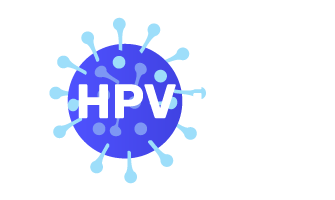Referințe bibliografice
[1]. H. Cubie, “Diseases associated with human papillomavirus infection,” Virology, vol. 445, no. 1-2, pp. 21-34, 2013.
[2]. WHO, “www.who.int,” 2018. [Online].
[3]. M. S. e. al., “Current Cervical Carcinoma Screening Guidelines,” Journal of Clinical Medicine, vol. 4, no. 5, 2015.
[4]. D. Saslow, “American Cancer Society, American Society for Colposcopy and Cervical Pathology, and American Society for Clinical Pathology Screening Guidelines for the Prevention and Early Detection of Cervical Cancer,” Journal of Lower Genital Tract Disease, vol. 16, no. 3, 2012.
[5]. W. Huh, “Use of Primary High-Risk Human Papillomavirus Testing for Cervical Cancer Screening: Interim Clinical Guidance,” Journal of Lower Genital Tract Disease, vol. 19, no. 2, April 2015.
[6]. e. a. L. von Karsa, “European guidelines for quality assurance in cervical cancer screening. Summary of the supplements on HPV screening and vaccination,” Papillomavirus Research, 2015.
[7]. B. E. W. H. J.D. Boone, “New insights into cervical cancer screening,” Journal of Gynecologic Oncology, vol. 23, no. 4, pp. 282-287, 2012.
[8]. H. Ikenberg, “Screening for Cervical Cancer Precursors With p16/Ki-67 Dual-Stained Cytology: Results of the PALMS Study,” Journal of the National Cancer Institute, vol. 105, no. 20, pp. 1550-1557, 2013.
[9]. J. M. Palefsky, “Virology of human papillomavirus infection and the link to cancer,” Wolters Kluwer, 2017. [Online]. Available: https://www.uptodate.com/contents/virology-of-human-papillomavirus-infections-and-the-link-to-cancer.
[10]. McCredie MR, Sharples KJ, Paul C, et al. Natural history of cervical neoplasia and risk of invasive cancer in women with cervical intraepithelial neoplasia 3: a retrospective cohort study. Lancet Oncol. 2008;9(5):425-434.
[11]. Martin-Hirsch PL, Paraskevaidis E, Kitchener H. Surgery for cervical intraepithelial neoplasia. Cochrane Database Syst Rev. 2013;(12):CD001318.
[12]. Wright TC Jr, Stoler MH, Behrens CM, et al. The ATHENA human papillomavirus study: design, methods, and baseline results. Am J Obstet Gynecol. 2012;206(1):46.e1-11.
[13]. Paavonen J, Lehtinen M. Chlamydia trachomatis and cancer. Sex Transm Infect. 1996;72(3):144-146.
[14]. Sellors JW, Karwalajtys TL, Kaczorowski J, et al. Incidence, clearance and predictors of human papillomavirus infection in women. CMAJ. 2003;169(5):428-434.
[15]. Simen-Kapeu A, Surcel HM, Dillner J, et al. Smoking impairs human papillomavirus (HPV) type 16 and 18 capsids antibody response following natural HPV infection. Scand J Infect Dis. 2008;40(9):745-751.
[16]. Ferlay J, Ervik M, Lam F, et al. Global Cancer Observatory: Cancer Today. Lyon, France: International Agency for Research on Cancer; 2020.
[17]. ACOG Practice Bulletin No. 168: Cervical Cancer Screening and Prevention. Obstet Gynecol. 2016;128(4):e111-e130.
[18]. Garland SM, Paavonen J, Jaisamrarn U, et al. Prior human papillomavirus-16/18 AS04-adjuvanted vaccination prevents recurrent high-grade cervical intraepithelial neoplasia after definitive surgical therapy: post-hoc analysis from a randomized controlled trial. Int J Cancer. 2016;139(12):2812-2826.
[19]. Hildesheim A, Herrero R, Wacholder S, et al. Effect of human papillomavirus 16/18 L1 viruslike particle vaccine among young women with preexisting infection: a randomized trial. JAMA. 2007;298(7):743-753.
[20]. Amador-Molina A, et al. Role of innate immunity against human papillomavirus (HPV) infections and effect of adjuvants in promoting specific immune response. Viruses. 2013 Oct 28;5(11):2624-42.

